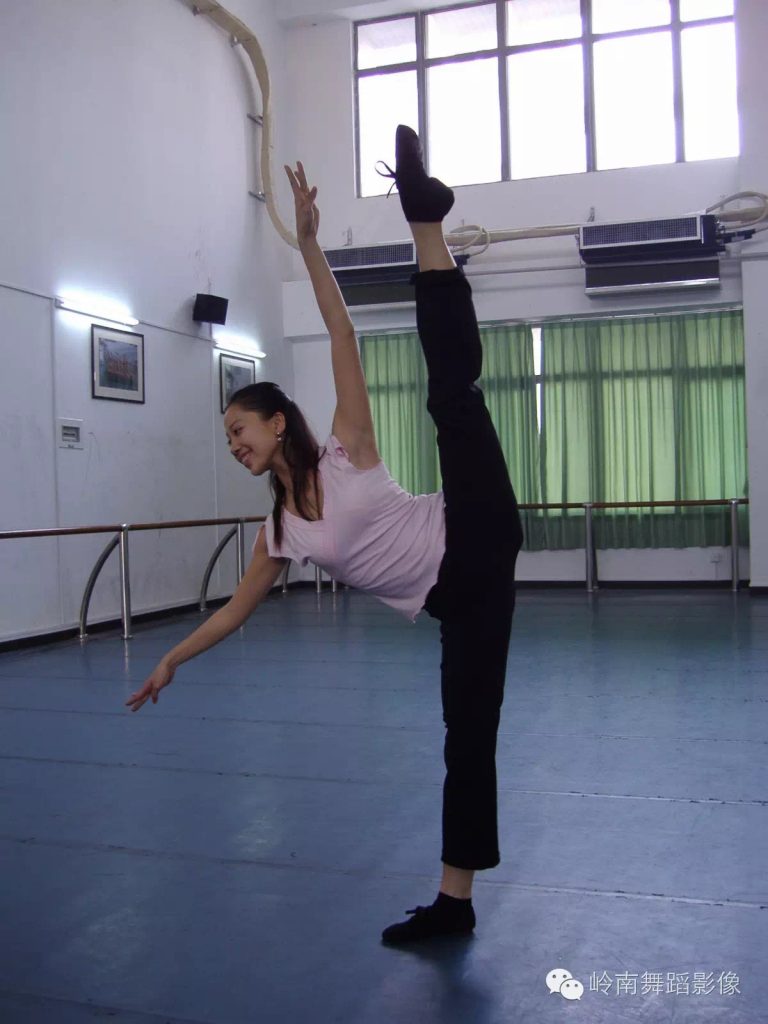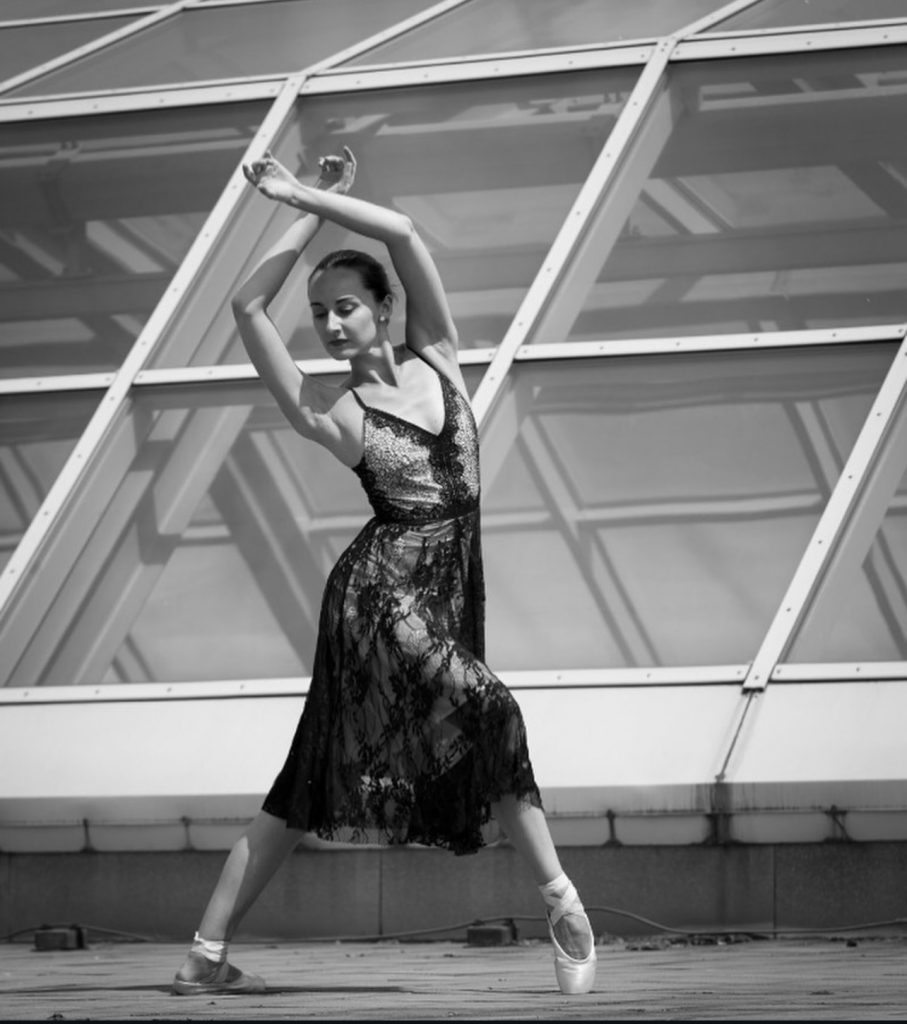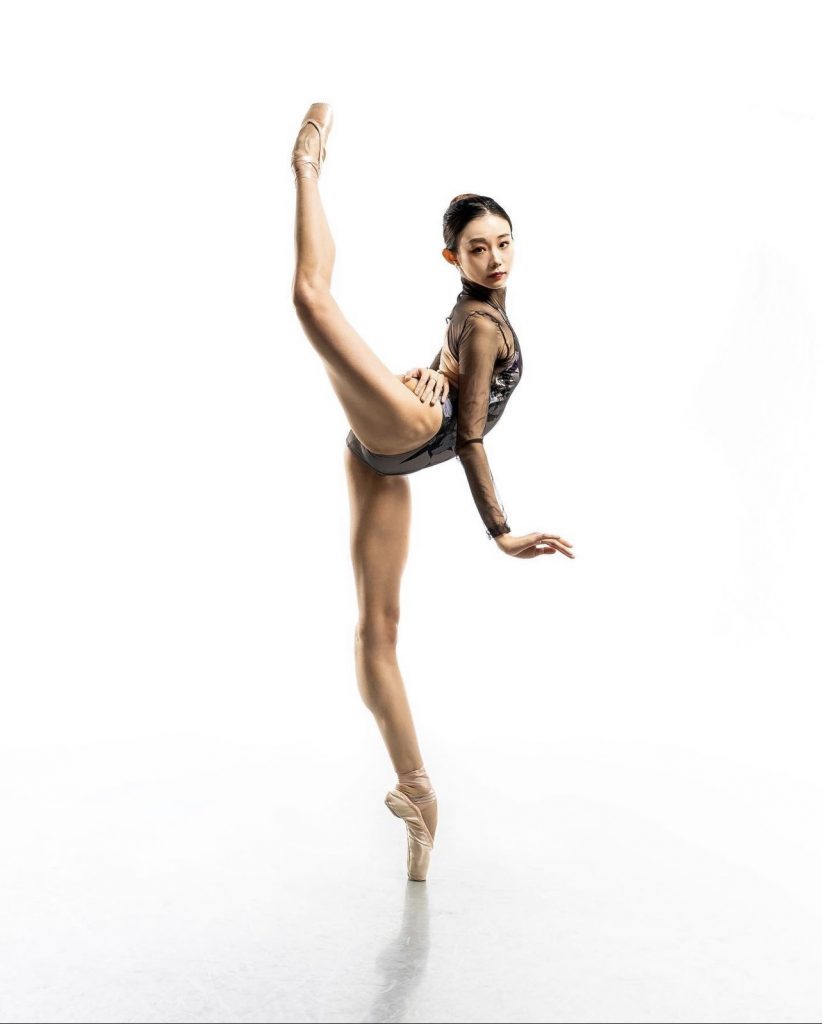STEP 1 —— Participating Jokers
10 Jokers were invited from top art organisations in different regions of China, representing different age groups. The final substantive interview was with 4
1. Liu Yan, Master, Lecturer. Graduated from the Dance Department of the Conservatory of Music of South China Normal University, The Hong Kong Academy for Performing Arts, Member of the China Education Association, Member of Guangdong Dancers Association.

2. Alina Zhantieva, graduated from the Moscow State Academy of Classical Ballet in 2005, where she furthered her studies in classical ballet technique with the Russian Ballet Master M. Korogodsky. L further studied classical ballet technique. Afterwards, she studied Menschova and Balanchin techniques in Zurich, Switzerland, and specialised in modern ballet.

3.Linyue (Click to view profile)
Graduated from the attached middle school of Beijing Dance Academy, she studied at Vaganova Ballet Academy and American ROCK Ballet School. She graduated from the Royal Conservatoire of Scotland with a degree in ballet and is currently studying for a Masters in Ballet at Roehampton.

4.Yan Jia. Master’s Degree in Athletic Training, teaching Pilates since 2006 until now. 2017 employed at Beijing Dance Academy Affiliated High School until now.
She is a certified instructor of MERRITHEW Total Barre️ in Canada;
GYROTONIC️ Exercise System Certified Instructor, USA;
McEntire Pilates️ registered coach; BalancedBody️ COREALIGN certified coach; IMAA Ballates Barre certified coach;
The Centre️ certified coach; Scolio-Pilates️ certified coach.

STEP 2 —— Preparation of interview questions
I will remain neutral throughout the interview process. Consider myself as someone who has never stepped into the dance scene before and ask them for advice with a blank slate. The purpose is to make them feel less hostile and attacked, so that they can easily say all their thoughts. This makes it easier for me to gather the Jokers’ truest thoughts.
Step 3 ——Joker Interview Transcript
Alina Zhantieva, graduated from the Moscow State Academy of Classical Ballet in 2005
Alina has been teaching ballet in China since 2008 and is familiar with both the requirements of the Russian school of ballet and the current state of Chinese ballet.
She believes that the Chinese ballet body requirements are completely inherited from the Russian (former Soviet Union), but are even stricter in terms of leg length. She herself said in the interview that the ballet body standard is completely without scientific basis, so it should not be too strict. But it seems that the Chinese ballet industry strictly adheres to such body standards.
She does not accept that ballet dancers are not slender, and believes that ballet dancers should have the traditional image of a ballet dancer, not only because of the pas de deux and the pointe technique, but also because it is closer to the image of the slender, soft, elegant and graceful woman in the classic ballet.
She doesn’t think that science is helpful in ballet/art, and believes that as a dancer you should start recognising from your student days that the identity of a dancer brings you differently, that you need to learn to adjust your diet, stay in shape and regulate your stress on your own, and that the aim of a dancer is to get as close to the image as possible.
Interciew with Liu Yan— Lecturer, Department of Dance, South China Normal University
Ms liuyan said that the current body standards for Chinese ballet are not scientifically based and are based on the teacher’s personal aesthetics, but are generally required to be very thin. She thinks that the Chinese dance industry’s selection standard for body shape has been like this for the past decades, and it doesn’t seem to be a problem.
However, she believes that the Chinese dance industry needs a more scientific basis for selection and training, but dance teachers generally tend to use traditional ‘wisdom’ and experience to make demands on their students, rather than more scientific data and knowledge. I could feel her helplessness as a person in the dance industry who wants to change and improve but can’t change the general environment.
Interview with Lin Yue
My conversation with Lin Yue was thrilling. She has a diverse educational background, having trained in ballet for 7 years at the Beijing Dance Academy, during which time she went on exchange to the Vaganova Ballet Academy in Russia, graduated and went to the ROCK Ballet School in the USA, returned to China and became a ballet teacher for 2 years before pursuing a B.A. and an M.A. in Ballet at the Royal Birmingham Conservatoire and Roehampton Conservatory of Music in the UK.
Her experience basically covers the current training styles of the major ballet schools in the world. Her role between Joker and dancer-student status also allows her to be more objective in evaluating the body standards of Chinese ballet.
She said that the 7 years of body management at the Beijing Dance Academy was very strict. Teachers customise the body standards entirely to their own aesthetics, and the new generation of teachers (25-45 years old) have stricter body standards than the older generation of dance teachers. They may feel that everyone in the past has been able to lose weight and eat less, so why not in your case? Individual differences are not taken into account.
Parents are supposed to be the backing of their students, but many of them lack health consciousness and artistic awareness, so they always think that as long as their students listen to their teachers and co-operate with them, everything will be fine. However, when parents and teachers are on a united front, it also puts more pressure on the dance student, and at the same time the teacher does not have complete knowledge of scientific training.
Many teachers realise that there is something wrong with this body standard, but they don’t think they can change anything with their own efforts. In the domestic dance industry, if you raise objections, you will be easily perceived as a very troublesome person who is not willing to give respect to your seniors, and you may be sidelined, so many dance teachers are reluctant to raise objections.
Body image discrimination in the ballet industry is a phenomenon that exists in the dance industry all over the world, and Linyue says that even in dance schools in the United States, where muscle power is preached, people don’t appear to be demanding slenderness, but in reality, teachers will use words such as a certain student can’t fit into a costume or a partner can’t be lifted to insinuate that the student isn’t skinny enough.
This also shows that even though scientific body standards and training systems are improving in the United States or the United Kingdom, it still takes a long time to change people’s traditional aesthetic and body prejudice towards ballet.
Interview with Yan Jia—–Rehabilitator, Beijing Dance Academy
Feelings of the dialogue with Joker
After talking to the four Jokers, the biggest impression I got was that the environment and traditional culture have a profound impact on people. Jokers like Alina believe that it is right that there is no science in dance body standards, because it has nothing to do with science, but rather with whether or not it matches the traditional aesthetics and image of traditional dance, while Joker Liu Yan hopes that dance can be more scientifically guided to protect the physical and mental health of dancers, but in the face of the fact that many teachers in the dance industry are preferring to borrow from traditional ‘wisdom’ and experience rather than science, she has no choice but to protect her students’ health by not requiring them to lose weight as much as possible from her own personal point of view.
At the same time I felt that the environment can numb people, and I questioned the Jokers who swore up and down that their dancers were healthy. Every dancer I interviewed, without fail, said that they were on strict dietary control by their teachers at school, that they were perhaps only able to eat fluids with the huge amount of exercise they did every day, that there was a serious imbalance between consumption and intake, and that they were facing menstrual problems, problems with bone development, problems with their heart rate, and problems with malnutrition. And when I asked Joker Ms Yan Jia (a rehabilitator at the Beijing Dance Academy), she said that I couldn’t just take the dancers’ word for it; she believed that dancers are the ones who bring themselves into the victim’s perspective and have a victim mentality when they are asked to lose weight, thus describing the process as painful. I was shocked by this statement. Even if the dancers are lying verbally, the state of their bodies that they show is not a lie, and the physical condition caused by long-term weight loss and malnutrition is not a lie.
When I wished to seek further evidence, I asked Mrs Yan Jia what she could use to prove that the students had not suffered any physical injuries as a result of slimming down? Is there BMI data available? Were students given regular physical check-ups? She said she could not provide the data because she had not done such examinations comprehensively.
The situation described by Joker Yan Jia, a teacher at the Beijing Dance Academy, is the exact opposite of what the BDA students I interviewed, Lin Yue and Ma Faxing, described as their experiences at the school, where they stated that it was the norm to be strictly required to eat and drink.
Self-deceptive indifference
Joker’s statement that they don’t ask dancers in the ballet to lose weight sounds friendly and wholesome, but in reality it’s a way of marginalising dancers who aren’t skinny enough and letting the dancers work out for themselves what’s going on. As the dancer Lin Yue said, if you have good technical skills but your teacher still doesn’t choose you as the lead and still doesn’t let you dance the duet, then you should realise that you are not thin enough.
The Jokers believe that in a ballet company, dancing is already the dancer’s job, and the Jokers are not obliged to ask the dancers to be thinner as they do in school, but when the dancers don’t have the chance to go on stage many times, they should realise that it’s because they’re not thin enough. They believe that dancers should push themselves to lose weight and maintain a good image. This certainly adds to the mental pressure on the dancer, as well as leaving the dancer on their own to continue to be thin in the traditional, unscientific way that has been accepted for so long.
In fact, this kind of ‘self-realisation’ of the dancers is not only found in dance companies, but also in dance schools. Teachers will say ‘we no longer require dancers to be thin’, but in reality they are trying to marginalise dancers who they think are not thin enough, so that the under-appreciated students will realise the reason why, and then lose weight privately in their own way in order to meet the standard. This can also lead to students resorting to extreme ways of losing weight, such as skipping meals and taking diet pills.
This is very much in line with a part of Chinese culture: ‘formalism and a love of playing with words’.
When they say ‘we no longer require dancers to lose weight’ yes, they no longer make the requirement obvious, but imply it by ignoring the out-of-shape dancers.
When they say ‘our dancers are in good health’ because their body check-ups are just a formality, according to Linyue, a student at the Beijing Dance Academy, body check-ups are not done every year, but on a sampling basis, and their class of students has only been sampled twice in seven years, and the so-called body check-ups are nothing more than a body flexion test and a body weight check-up. Lung capacity.
When they say ‘we have a dance science department that promotes more scientific training methods’, the reality is that the dance science department just keeps writing papers that look more advanced, and science is never really integrated into the teaching and selection of material, and the majority of dance teachers continue to use the traditional slimming methods and training methods.
